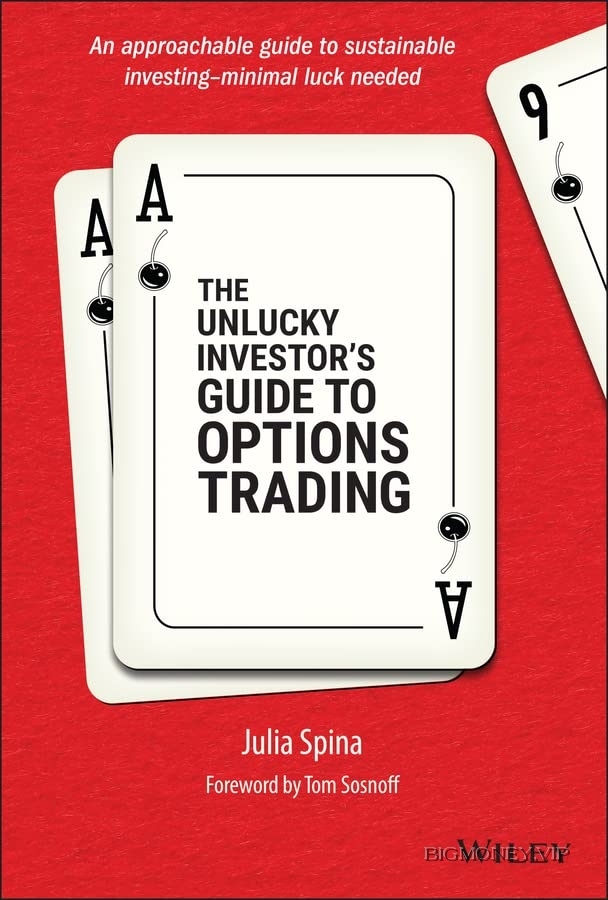The Unlucky Investor’s Guide to Options Trading by Julia Spina

Chapter 1
Math and Finance Preliminaries
The purpose of this book is to provide a qualitative framework for options
investing based on a quantitative analysis of financial data and theory.
Mathematics plays a crucial role when developing this framework, but it is
predominantly a means to an end. This chapter therefore includes a brief
overview of the prerequisite math and financial concepts required to
understand this book. Because this isn't in‐depth coverage of the following
topics, we encourage you to explore the supplemental texts listed in the
references section for those mathematically inclined. Formulae and their
descriptions are included in several sections for reference, but they are not
necessary to follow the remainder of the book.
Stocks, Exchange‐Traded Funds, and
Options
From swaptions to non‐fungible tokens (NFTs), new instruments and
opportunities frequently emerge as markets evolve. By the time this book
reaches the shelf, the financial landscape and the instruments occupying it
may be very different from when it was written. Rather than focus on a
wide range of instruments, this book discusses fundamental trading
concepts using a small selection of asset classes (stocks, exchange‐traded
funds, and options) to formulate examples.
A share of stock is a security that represents a fraction of ownership of a
corporation. Stock shares are normally issued by the corporation as a source
of funding, and these instruments are usually publicly traded on stock
exchanges, such as the New York Stock Exchange (NYSE) and the Nasdaq.
Shareholders are entitled to a fraction of the company's assets and profits
based on the proportion of shares they own relative to the number of
outstanding shares.
An exchange‐traded fund (ETF) is a basket of securities, such as stocks,
bonds, or commodities. Like stocks, shares of ETFs are traded publicly on
stock exchanges. Similar to mutual funds, these instruments represent a
fraction of ownership of a diversified portfolio that is usually managed
professionally. These assets track aspects of the market such as an index,
sector, industry, or commodity. For example, SPDR S&P 500 (SPY) is a
market index ETF tracking the S&P 500, Energy Select Sector SPDR Fund
(XLE) is a sector ETF tracking the energy sector, and SPDR Gold Trust
(GLD) is a commodity ETF tracking gold. ETFs are typically much cheaper
to trade than the individual assets in an ETF portfolio and are inherently
diversified. For instance, a share of stock for an energy company is subject
to company‐specific risk factors, while a share of an energy ETF is
diversified over several energy companies.
When assessing the price dynamics of a stock or ETF and comparing the
dynamics of different assets, it is common to convert price information into
returns. The return of a stock is the amount the stock price increased or
decreased as a proportion of its value rather than a dollar amount. Returns
can be scaled over any time frame (daily, monthly, annual), with
calculations typically calling for daily returns. The two most common types
of returns are simple returns, represented as a percentage and calculated
using Equation (1.1), and log returns, calculated using Equation (1.2). The
logarithm's mathematical definition and properties are covered in the
appendix for those interested, but that information is not necessary to know
to follow the remainder of the book.
The Unlucky Investor’s Guide to Options Trading by Julia Spina




